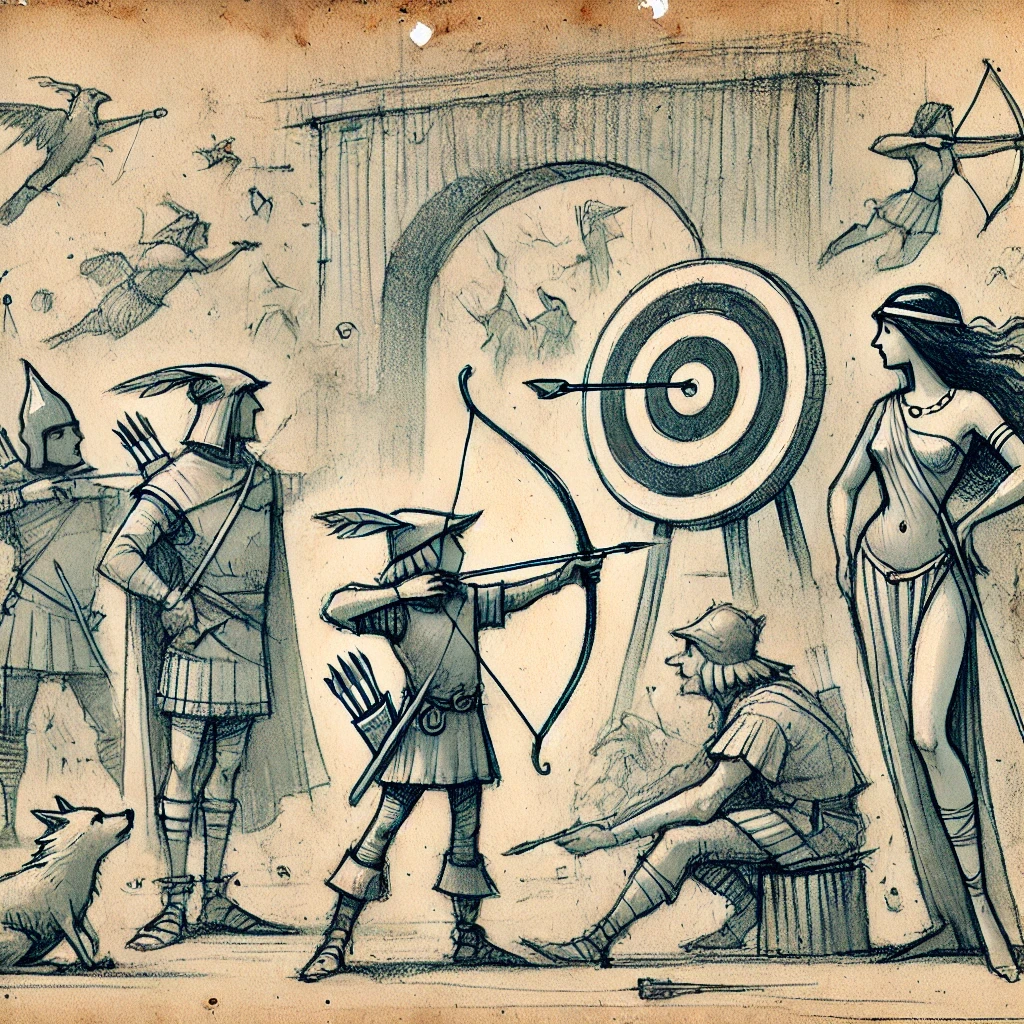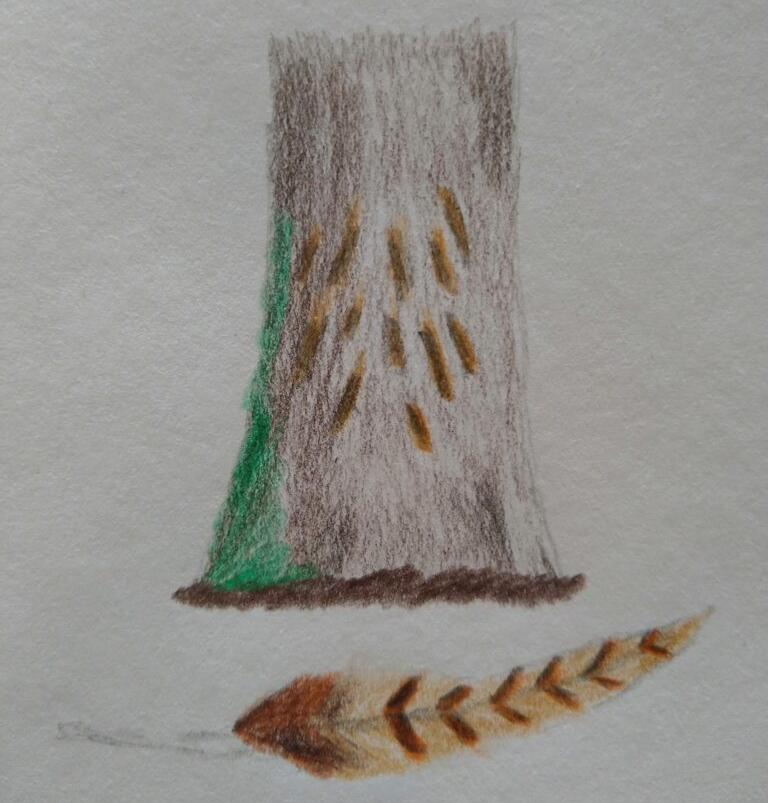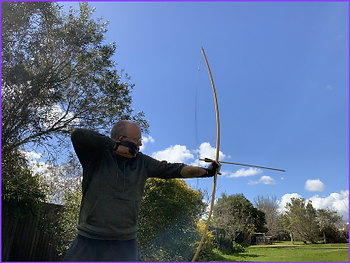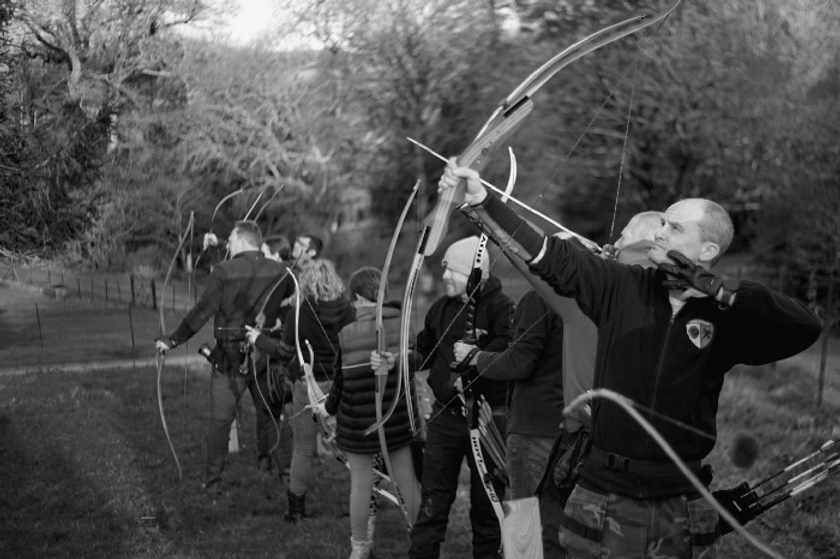
Hello and welcome back, fellow archers and enthusiasts! Despite the never-ending challenges we face, our passion for archery keeps us together, and we’ve got each other’s backs through it all.
As we gear up for what promises to be an action-packed summer, let’s dive into a review of some of the most popular serving tools that who knows, may come handy from time to time.
There are many to choose from and the vast majority are of good quality and do the job. Of course, there are quirks and variances in the design of different brands to allow for a couple of different techniques in, and frequency of, serving a string. However, they all effectively do the same job and ultimately it very much comes down to personal preference. Now a serving tool is not an essential piece of archery kit, especially if you do not make or regularly repair strings. Notwithstanding string making, the only main occasion that would arise whereupon an archer would need a serving tool would be if they needed to replace their centre-serving, and even with that the correct diameter serving thread spool would be required to suit the arrow nocks. Even for the most regular of shooters the need for this kind of maintenance is quite sparse as by the time the center serving does warrant attention the rest of the string probably does too. When such wear and tear becomes noticeable, get a new string.
If the centre-serving does happen to fail, often at one end a temporary repair can often be undertaken to keep you in the competition without the need for a serving tool. However, if the serving fails at the nocking point, which is a more regular occurrence, the archer doesn’t have much choice than to replace the entire center-serving.
A serving tool means having serving thread spools which means having different diameter serving threads to suit your strings and arrow nocks, which means having different colors if you want to match different items of equipment. This can mean quite a bit of kit, perhaps only seeing use every couple of years, if that, and two years can be a long time for an archer when it comes to changing habits thereby rendering whatever original serving spools that were acquired now redundant.
So before you go and start filling your cart with a range of string tools and spools, think very carefully about how often you’ll need them, if indeed you’ll need them at all. For if your primary objective is to shoot, stay shooting, and get back to shooting asap following a minor string hiccup then what I would recommend therefore is to get to know your very friendly, obliging and approachable fellow archer who just happens to make the occasional string. I am most confident they would be honored to assist you in getting you back in the game. Someone like, I don’t know…….me? (insert cute smiley and fingers crossed emoji).
With that in mind however, I would still recommend an archer becomes familiar with using a serving tool as it is one of those skills that once you acquire it you never really forget it and you never know when you might need it.
So here are some of the serving tools that I have and my own views on them. It’s not a critique but more a consideration of what the different designs can mean.

First up it’s the Avalon Tec-One. This is a very nice and tough sturdy serving tool. There’s a side entry for the serving thread so some time can be saved in having to feed it through a center hole. It comes with two weighted textured adjusting knobs on each end.
I really like this tool as it is very easy to adjust as you serve should you need to occasionally correct the tension. Because the end knobs are weighted this tool also lends itself to speed serving. This is when on setting the tension satisfactorily, the bow-string on either end of the serving tool is gripped by your hands and a rotation momentum is established with the serving tool spinning around the bow-string while simultaneously serving it at the same time without the need for it being constantly guided by your hand. I also find that when speed serving, the end knobs on this tool retain the tension quite well without it suddenly becoming slack and falling away from you. This saves you having to undo the last few serving turns and re-doing them to the desired tension. The thick steel rollers are fixed and lend themselves well to the overall feeling of structural rigidity of this tool.

The only disadvantage I found with this tool, if indeed it could be called that, is the end hexagonal retaining fittings can be tricky to fit as they have to sit in both the body of the serving tool and the spool. But who’s rushing?
Next up is the Bearpaw Deluxe Serving Tool. This is another very tough and durable serving tool. There’s a side entry for the serving thread so some time can be saved in having to feed it through a center hole. I find the toothed end clamps on the main axle help in ease and speed when loading the serving spool. it comes with two knurled adjusting knobs at each end. As with the Avalon Tech One these make adjusting the tension easy and precise. Similarly given the bulk and geometry of this tool I find it can also be used for speed serving.

However given the short length of the steel rollers and their being slightly proud of the main frame, I find that occasionally the serving thread can sometimes get wedged between the roller and the plastic body because of the angle at which it leaves the spool. This can abruptly interrupt the thread flow. This is despite there being a small thread recess in the first roller. Furthermore I find that the large diameter, yet narrow, end knobs regularly loosen, meaning that the tension needs to be checked quite regularly. This can be an issue when speed-serving and all of a sudden the serving tool drops on your lap after tension has been relaxed. Nonetheless given the outward weight, I find when using this tool there is a nice rotation momentum that can be established where it swings back to your fingers and you don’t have to use your wrist as much, once you get used to it. I use this tool a lot as I like the feeling of sturdiness and it performs the job extremely well if one is not in a hurry.

A very familiar sight is the Bohning Serve-Tite Serving Tool. This is a relatively basic device compared to those previous. iI differs in that there are no feed rollers. The thread instead passes through a series of holes with arrows on the frame to indicate the threading direction. It’s very quick and easy to set up and is ideal for the more occasional serving work. It holds the tension quite well during serving and being lightweight is very easy control. It’s a popular design in that you can purchase almost identical ones as manufactured by Avalon and Cartel with the price range being very comparable. It is nonetheless light and made of plastic so one would need to be careful in how it is stored, it would probably not be too amenable to being tossed into a tool-box, and be careful of not leaving it on a shelf perhaps for extended periods of time thus inviting the possible perishing effects of UV. As is common with virtually every serving tool as one travels down the price range a wing-nut is more frequently employed to adjust the tension as opposed to a custom made knob. I find absolutely nothing whatsoever wrong with this, with wing nuts doing the job just as well. I would regard this tool as being of excellent use for those who may need to change their center serving for whatever reason. It probably would not lend itself well to extended long term use for all out frequent string building given its lightweight construction and some might prefer the more familiar rollers instead of holes. As I said though, preference of these tools is perhaps best served by trying them out or chatting to those who’ve used them.

Now this is a tool that I was somewhat sceptical about when it arrived but the more I use the more it I’ve come to like it’s lightweight yet sturdy construction and balance. It’s the Spigarelli Serving Tool. The three rollers are fixed in place and again there’s a side entry for the serving thread so some time can be saved in having to feed it through center hole. It’s made of metal and has a durable feel to it.
The tension adjusting knob has graduations on it which is not something I’ve come across before on a serving tool and I’m not sure as to the absolute benefits of that as the tension I find is very much a question of feel when it comes to serving a string. But then again that’s for myself and I’m sure it serves as an assistance to others out there. It also came with a very, almost wafer thin, washer which does help prevent the adjusting knob from loosening. The rollers are short, so more amenable to speed-serving given the weight distribution. However, as with some other similar tools designed like this, when the thread is coming from the edge of the spool it can rub off the tool body as it leaves the spool. I don’t find this a problem as such, more an observation and am curious as to whether it’s something designers consider if nothing else other than adhering to an engineering tolerance or even aesthetics. It has a deeper recess than most tools where the thread exits the body which I like as it seem to give a more snug fit on the main bow-string when serving. Once again though this is very much a personal preference. This is a very good value tool for what you get.

And finally, we come to the Cartel serving tool. This is perhaps the most popular and recognizable tool out there. As with the tri-hole design this is also available from some of the other main suppliers under their own brands. These are excellent value and are the tools I relied upon when I first started building strings being tough, durable and very amenable to being tossed into a toolbox or kit-bag.
However in discussing some of the more generic brands of this design one needs to be careful that despite its good value there can be issues with the rollers. some are provided with a hexagonal shaped roller instead of a round one which I find can be very wearing on the thread as it is travelling over an edge rather than a smooth surface. On one of the tools above you’ll note I’ve replaced those rollers with ones of the round variety, though not a pretty sight, they do the job. The standard rollers that come with these tools are held in by two crosshead screws on one end and I find these can often become loose.
Another problem I found with some of the more generic versions of these is the thread exit hole sometimes has a very sharp edge. This can result in the thread leaving the tool being badly frayed or even the filaments separating. When this happens my advice is to stop using it as the whole point of a serving thread is to protect the bowstring. There’s no point in installing an already damaged serving.
Nonetheless an excellent little tool and the one I would recommend for the more occassional string-worker.

Now there are many other make and models out there and their true value I think comes into their frequency and intensity of use particularly for those where speed-serving is a preference. All serving tools come with washers, in most cases plastic. However I have replaced virtually all of these with normal metal washers for two main reasons. I have found on occasion the plastic washers do not always have a consistent width around the surface which means that as the spool turns it can become tight and loose for every half revolution as it encounters the thicker part of the washer which is not only annoying but also results in a serving of inconsistent tension as it travels along the string. Secondly when one is serving regularly one will find very quickly that serving spools also come in a variety of widths, some of which mean placing additional washers on the spindle to avoid putting too much strain on the serving tool body when tightening and to allow for a more consistent application of tension when using the adjusting knob.
So before investing in range of spools and tools to try and cover your bases, think very carefully about how often you’ll need them, if indeed you’ll need them at all. For if your primary objective is to shoot, stay shooting, and get back to shooting following a minor string hiccup then I think you’ll find plenty of support in your club or amongst other archers to keep you doing just that.

Oh wait, nearly forgot, one more thing… Any queries?
her is my email: editor_o.reynolds@tifam.news
Our main objective here is to share and learn from each other after all.
Please take care out there!























